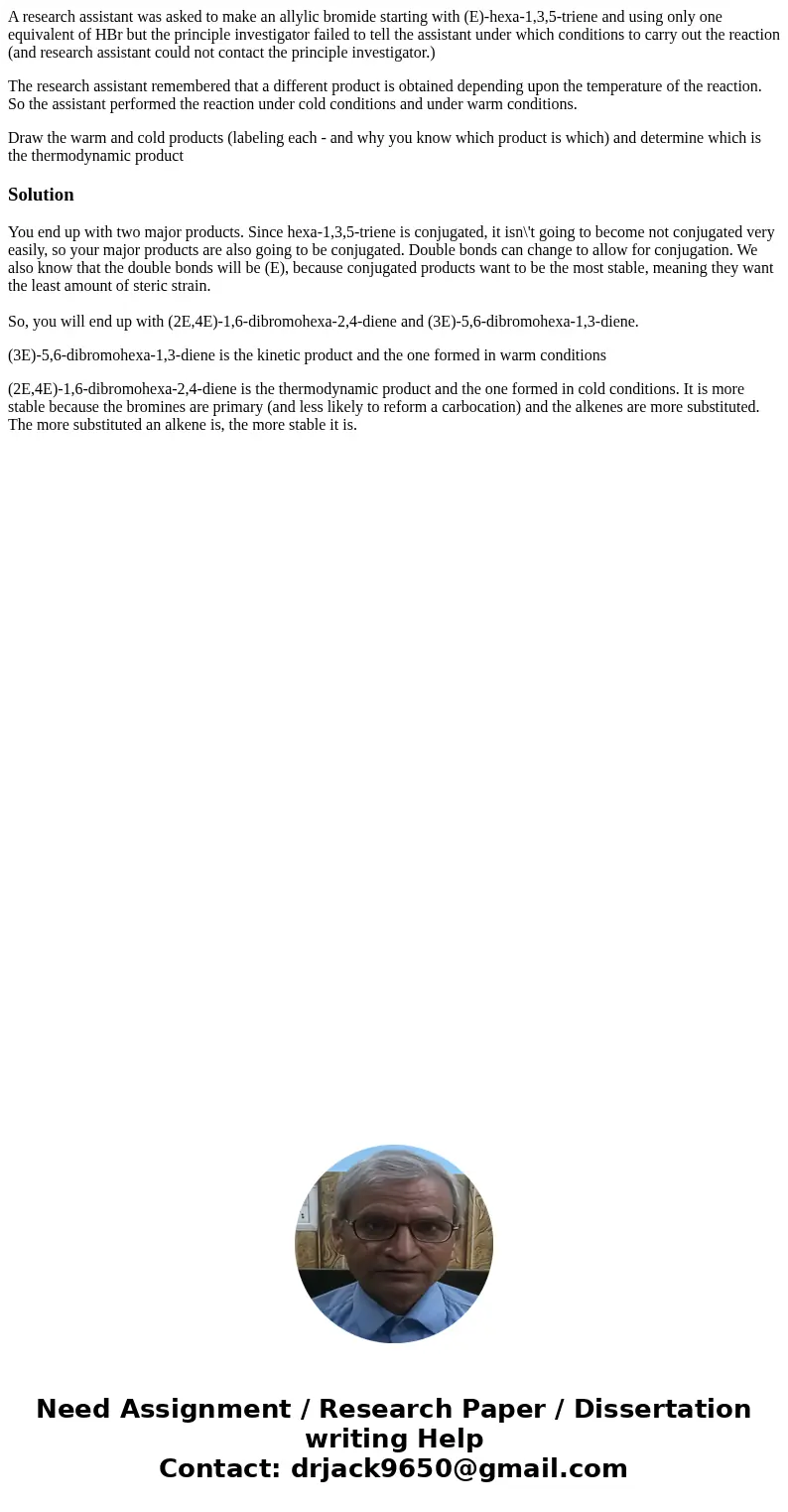A research assistant was asked to make an allylic bromide st
A research assistant was asked to make an allylic bromide starting with (E)-hexa-1,3,5-triene and using only one equivalent of HBr but the principle investigator failed to tell the assistant under which conditions to carry out the reaction (and research assistant could not contact the principle investigator.)
The research assistant remembered that a different product is obtained depending upon the temperature of the reaction. So the assistant performed the reaction under cold conditions and under warm conditions.
Draw the warm and cold products (labeling each - and why you know which product is which) and determine which is the thermodynamic product
Solution
You end up with two major products. Since hexa-1,3,5-triene is conjugated, it isn\'t going to become not conjugated very easily, so your major products are also going to be conjugated. Double bonds can change to allow for conjugation. We also know that the double bonds will be (E), because conjugated products want to be the most stable, meaning they want the least amount of steric strain.
So, you will end up with (2E,4E)-1,6-dibromohexa-2,4-diene and (3E)-5,6-dibromohexa-1,3-diene.
(3E)-5,6-dibromohexa-1,3-diene is the kinetic product and the one formed in warm conditions
(2E,4E)-1,6-dibromohexa-2,4-diene is the thermodynamic product and the one formed in cold conditions. It is more stable because the bromines are primary (and less likely to reform a carbocation) and the alkenes are more substituted. The more substituted an alkene is, the more stable it is.

 Homework Sourse
Homework Sourse